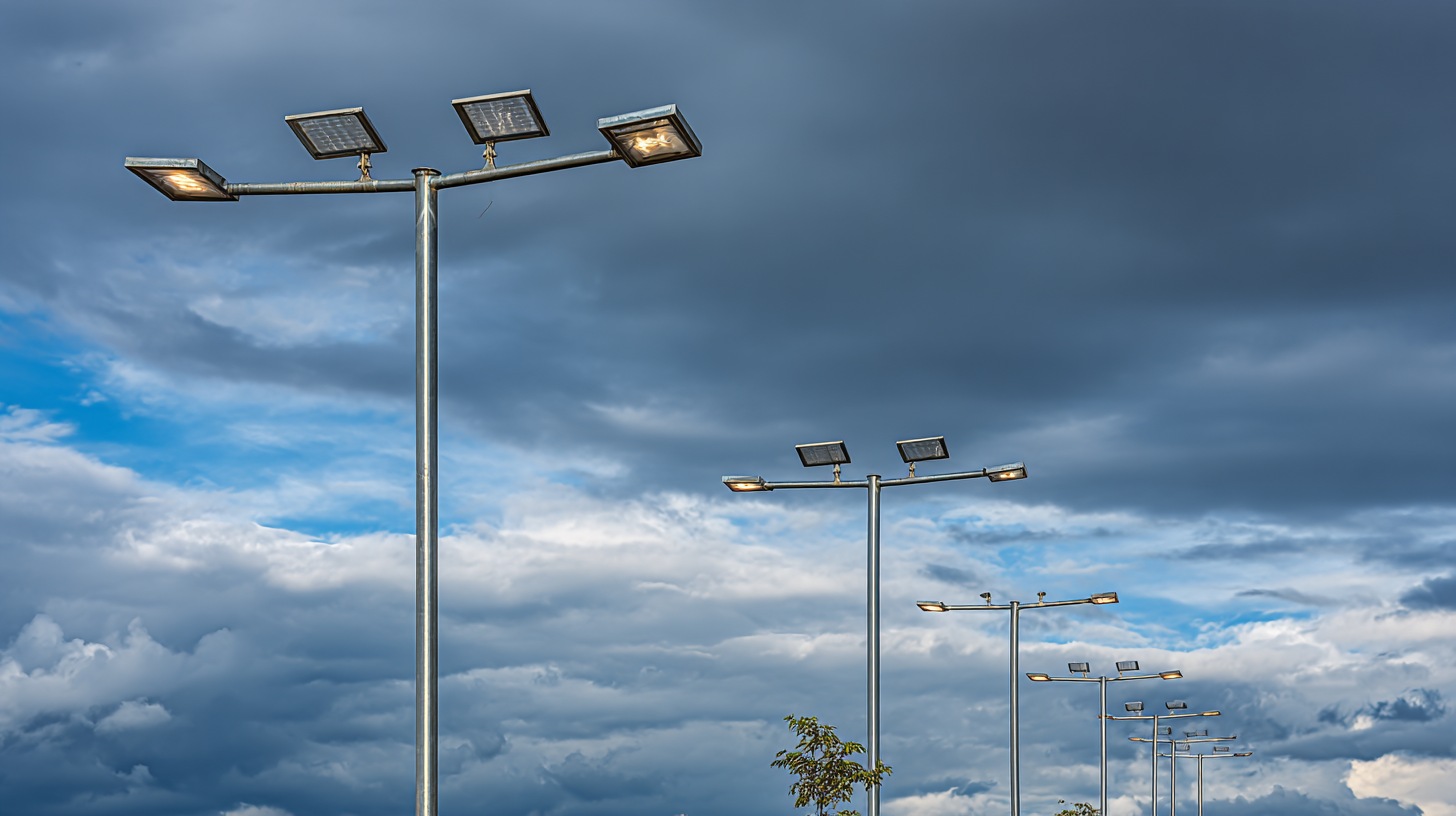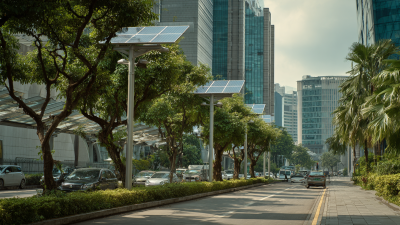Transform Your Neighborhood: The Benefits of Installing Solar Street Lights with Poles
As urban areas continue to evolve, the search for sustainable and energy-efficient lighting solutions becomes essential. One innovative approach gaining traction is the installation of solar street lights with poles, which not only illuminates public spaces but also enhances the overall aesthetic and safety of neighborhoods. These eco-friendly lighting systems harness the power of the sun to provide reliable illumination while reducing electricity costs and lowering carbon footprints. In this guide, we will explore the myriad benefits of implementing solar street lights with poles in your community, including improvements in safety, environmental impact, and economic savings. By understanding how these systems work and the positive changes they can bring, residents and local authorities alike can take meaningful steps toward transforming their neighborhoods into brighter, safer, and more sustainable spaces.

How Solar Street Lights Enhance Community Safety and Security Metrics
The installation of solar street lights with poles has proven to significantly enhance community safety and security. According to the International Renewable Energy Agency (IRENA), well-lit public areas reduce crime rates by up to 30%. This is particularly important in neighborhoods where lighting is scarce, as criminals tend to operate in darker areas. By illuminating streets, pathways, and parks, solar street lights create a sense of visibility that deters potential wrongdoing and fosters a safer environment for residents.
Moreover, a report by the National Institute of Justice indicates that improved lighting not only decreases crime but also increases community engagement. When public spaces are well-lit, residents are more likely to use these areas after dark, promoting a sense of community and collective ownership. Solar street lights enhance visibility and accessibility, which encourages social interaction, thereby further improving overall safety metrics. As neighborhoods transition to renewable energy sources like solar power, they not only contribute to sustainability but also to a higher standard of living marked by an engaged and secure community.
Impact of Solar Street Lights on Community Safety Metrics
The Financial Impact of Solar Street Lights on Local Government Budgets
The integration of solar street lights into urban infrastructures presents significant financial advantages for local governments. According to a report by the U.S. Department of Energy, cities can reduce their energy costs by up to 75% by replacing traditional streetlights with solar-powered options. This is particularly important as municipalities face budgetary constraints and increasing operational expenses. The initial investment in solar technology can be offset within just a few years through the savings generated from decreased electricity bills and reduced maintenance costs.
Furthermore, solar street lights contribute to enhanced community safety and attractiveness, which can lead to increased property values and local tax revenue. The National Renewable Energy Laboratory (NREL) indicates that well-lit streets can reduce crime rates significantly, enhancing the overall quality of life for residents. This increase in safety and aesthetics can stimulate economic activity in the area, ultimately providing a positive return on investment for local governments. By embracing solar technology, municipalities not only curtail their expenditures but also invest in sustainable development that benefits their communities economically and socially.
Evaluating the Environmental Benefits of Solar-Powered Lighting Solutions
Solar-powered street lights are an innovative solution that not only illuminate our neighborhoods but also contribute significantly to environmental sustainability. According to a report by the International Renewable Energy Agency, transitioning to solar lighting can reduce carbon emissions by up to 25% compared to traditional street lights. Each solar street light can prevent approximately 1 ton of CO2 emissions per year, which adds up to a considerable reduction in carbon footprint across larger installations.
In addition to minimizing greenhouse gas emissions, solar street lights can decrease reliance on fossil fuels. The U.S. Department of Energy indicates that using renewable energy sources for public lighting can save municipalities thousands of dollars annually in electricity costs. The energy generated by solar panels can power the lights for over 12 hours a day while requiring minimal maintenance, thus reducing ongoing operation costs.
Tips for Consideration:
1. Evaluate your neighborhood's sunlight exposure to determine the most effective locations for installation.
2. Consider integrating smart technology that allows for motion-activated lighting, further enhancing energy efficiency.
3. Collaborate with local governments or organizations that provide incentives for solar energy installations, ensuring a lower initial investment.

Community Engagement: Involving Residents in Solar Street Light Projects
Engaging residents in the installation of solar street lights is crucial for fostering a sense of community ownership and responsibility. By involving local citizens in the planning and decision-making processes, project organizers can ensure that the needs and preferences of the neighborhood are adequately addressed. This can be achieved through community meetings, surveys, and workshops, which provide a platform for residents to voice their opinions, share their ideas, and express their concerns about the new lighting initiative.
Moreover, involving residents in these projects can enhance community spirit and cooperation. When locals participate in the selection of locations for the solar street lights and contribute to the installation efforts, they not only gain a deeper understanding of the project's benefits but also build meaningful connections with their neighbors. This collective effort can lead to a stronger, more resilient community that values sustainability and safety, ultimately resulting in a more vibrant neighborhood atmosphere. By prioritizing community engagement, solar street light projects can thrive, reflecting the unique character and needs of the people they serve.
A Comparative Analysis of Traditional vs. Solar Street Lighting Efficiency
Solar street lighting presents a compelling alternative to traditional street lights, particularly when considering efficiency and sustainability. Traditional streetlights, often fueled by electricity from fossil fuels, can incur high energy costs and contribute to environmental pollution. In contrast, solar street lights harness renewable energy from the sun, significantly reducing operational costs while promoting ecological responsibility. They operate autonomously, relying on built-in solar panels, which minimizes reliance on grid electricity.

From a performance standpoint, solar street lights have made considerable strides. Modern solar lighting systems are equipped with advanced LED technology, providing bright and efficient illumination. When compared to traditional lights, which may suffer from frequent bulb replacements and limited lifespan, solar lights typically have longer-lasting components and fewer maintenance requirements.
Furthermore, solar street lights can be strategically deployed in areas without existing electrical infrastructure, enhancing public safety and community well-being in a cost-effective manner. This comparative analysis highlights the clear advantages of solar street lighting in terms of both energy efficiency and overall utility in urban and suburban settings.
Related Posts
-

The Future of Urban Lighting Exploring the Benefits of Solar Street Light Technology
-

Harnessing the Sun Exploring the Benefits of Solar Powered Lights for Sustainable Living
-

Illuminate Your Outdoors with Solar LED Lights for a Sustainable Lifestyle
-

illuminate your driveway at night with stylish and efficient solar driveway lights
-

Illuminate Your Outdoor Space Discover the Benefits of Using Solar Post Lights for Your Garden
-

Unleashing the Power of the Sun: How Solar Powered Lights Transform Outdoor Spaces
